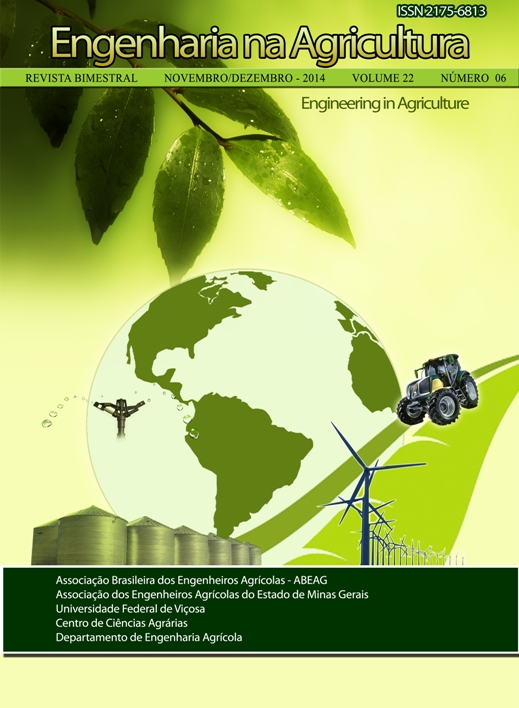EFFICIENCY OF THE USE OF DIATOMACEOUS EARTH IN CORN GRAIN PROTECTION - DOI: 10.13083/1414-3984.v22n06a02
DOI:
https://doi.org/10.13083/reveng.v22i6.582Keywords:
Sitophilus zeamais, pó-inerte, análise de defeitosAbstract
Among the main methods of insect control on post-harvest grain, highlighted is the use of diatomaceous earth. Thus, it was proposed to test the efficiency of different dosages of this inert powder on control of Sitophilus zeamais adults in maize grains during storage. Five repetitions were performed with 100 g of grains with different moisture contents (12, 14, and 17%), infested with 20 insects, and treated with different dosages (0, 500, 1500 and 2500 g. t-1) in h hours and 15 days after application of the product. Mortality of insects in the grains, loss of weight, humidity and technological analysis of grains was performed at 60 days after each period of infestation. There were no statistical differences between the averages of mortality regardless of the treatment and moisture content. The control treatments of all moistures presented greater weight losses in both periods of infestation. Higher moisture content was found in untreated grains with initial value of 17%. Higher values of rotten grains were obtained for untreated grains, independent of the moisture content and infestation period. It was therefore concluded that the treatment with diatomaceous earth is effective for the control of S. zeamais and reduces damage to corn grains.Downloads
Downloads
Published
How to Cite
Issue
Section
License
Authors who publish with this journal agree to the following terms:
The author(s) authorize(s) the publication of the text in the journal;
The author(s) ensure(s) that the contribution is original and unpublished and that it is not in the process of evaluation by another journal;
The journal is not responsible for the views, ideas and concepts presented in articles, and these are the sole responsibility of the author(s);
The publishers reserve the right to make textual adjustments and adapt texts to meet with publication standards.
From submission, the author is fully conceding the paper's patrimonial rights to the publication, but retaining the owner of its moral rights (authorship and paper's identification) according to Creative Commons Attribution-Noncommercial.








 Licensed by
Licensed by 